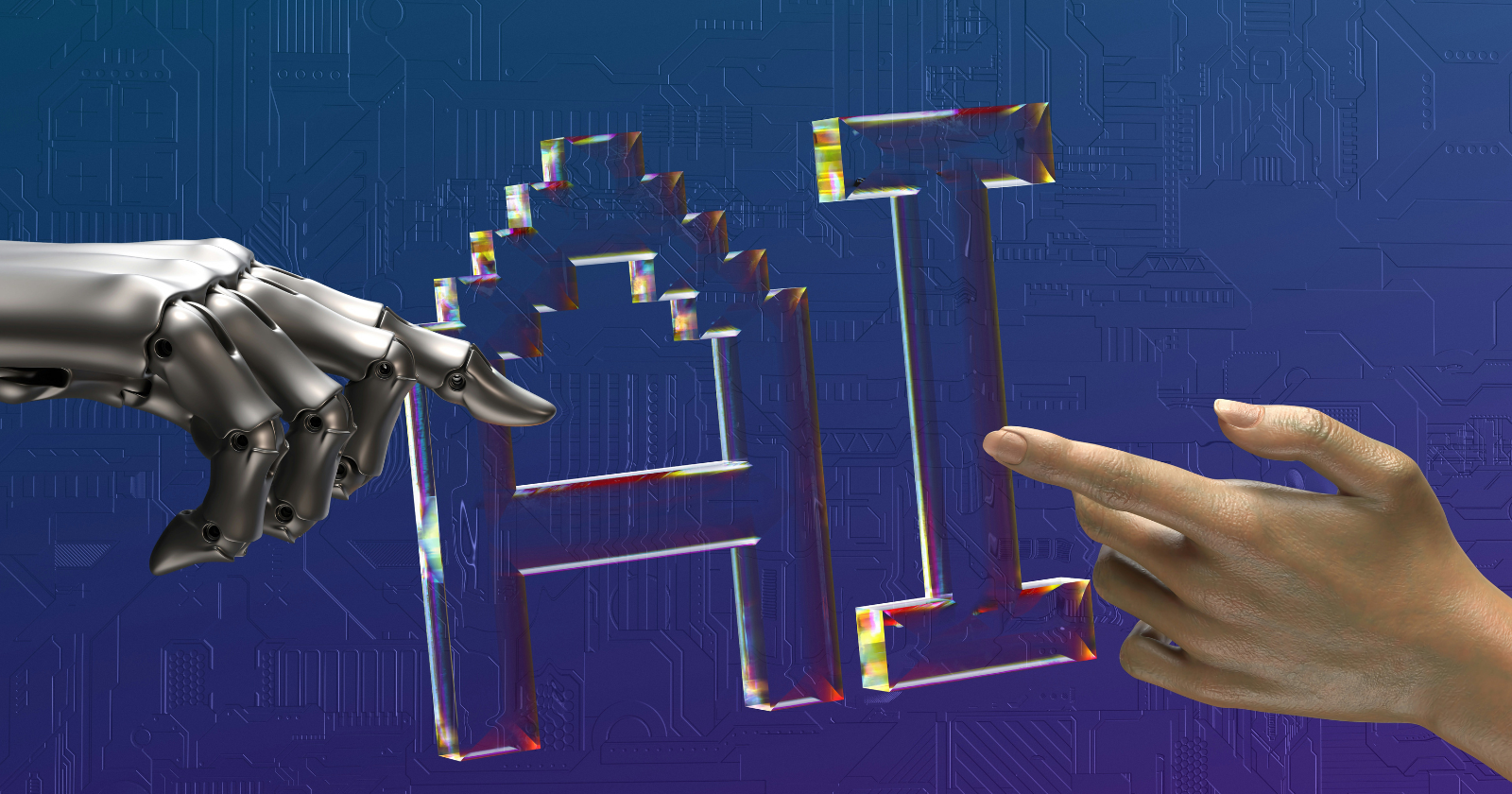Implementing AI Automation: Streamlining Your Business for Efficiency and Growth
Embarking on the journey of implementing AI automation in your business can feel like stepping into the future—exciting and a tad bit overwhelming, right? Imagine the possibilities when machines handle the mundane tasks, leaving you to focus on creative and strategic work. It’s not sci-fi; it’s today’s digital transformation in full swing. Bringing artificial intelligence (AI) into your workflow can skyrocket productivity and open up a world of opportunities. But have you thought about the potential challenges that lie ahead?
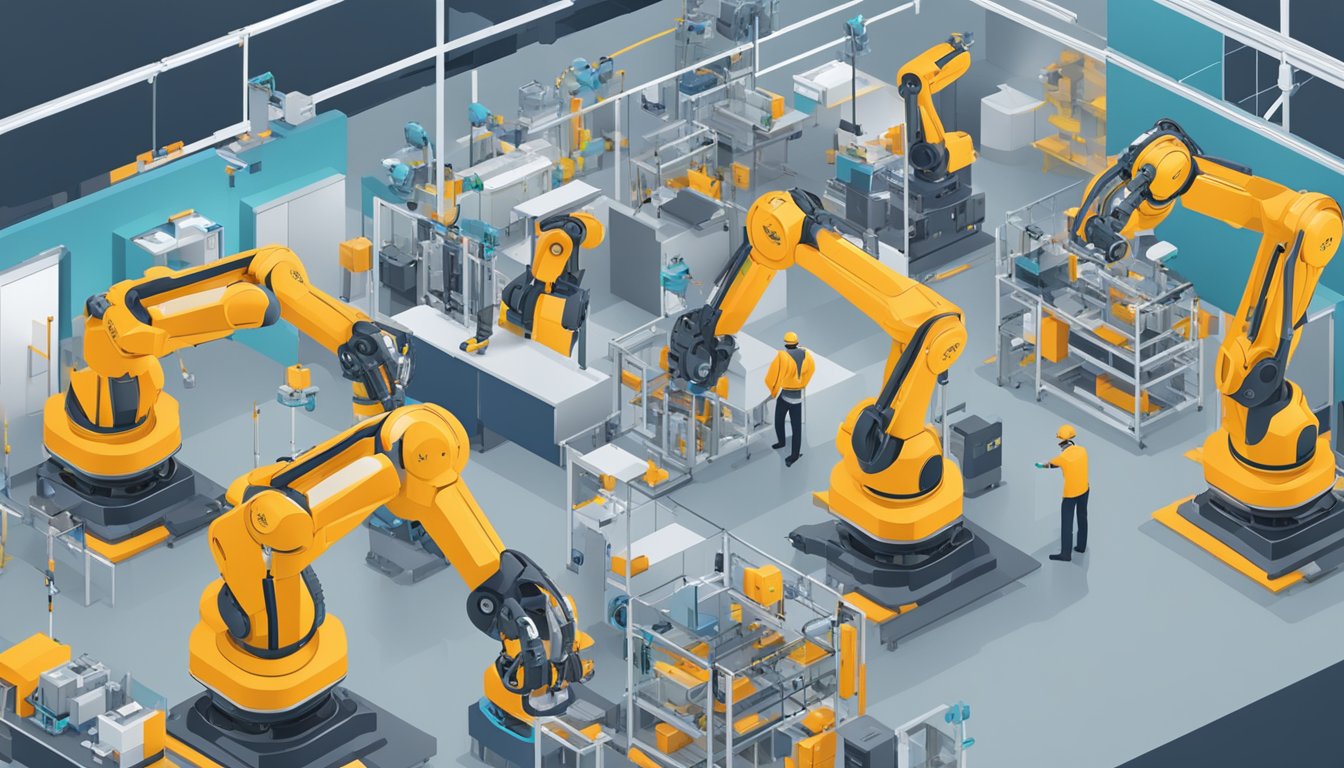
Now, don’t fret! Every great adventure has its hurdles, and AI automation is no exception. Are you gearing up to tackle the complexity of integrating new systems or ensuring that your team is on board with the change? The insights from experts, like those at LambdaTest, indicate that the blend of AI technologies and automation is the key to streamlining processes efficiently. And while you’re brainstorming the future of your organization, the amalgamation of AI and robotics process automation (RPA) mentioned in the IBM Blog could be the perfect recipe for intelligent automation.
Ready to make numbers your new best friend? Because guess what—according to McKinsey’s analysis, techniques like deep learning could rake in a whopping $3.5 trillion to $5.8 trillion in annual value. That’s a chunk of change you don’t want to ignore! So as you prep for this transformative leap, remember the aim isn’t just to implement technology; it’s to cultivate an environment where data, people, and automated processes coalesce, as Dr. Anil Khurana of PwC suggests. Keep your eyes peeled for those cutting-edge ideas that might just redefine your industry’s landscape.
Understanding AI and Automation
Hey there! You’re about to get the lowdown on how AI and Automation are changing the game. These tech buddies are pairing up to streamline processes like never before. Get ready to glimpse into a future where machines not only do the heavy lifting but also think on their feet—well, circuits.
Artificial Intelligence Basics
Artificial Intelligence (AI) is like the brainy kid on the tech block. AI enables computers to mimic human intelligence, making decisions and learning from experiences without needing a breather. One key player here is Machine Learning, which is AI’s way of improving over time through data analysis. Think of it as a robot that gets smarter every time it does its homework.
Automation Technologies
Now, let’s chat about Automation. It’s all about teaching machines to handle repetitive tasks so you can kick back—or focus on something more exciting. From robots assembling cars to software managing your calendar, automation is what keeps things ticking without a hitch.
Synergy Between AI and Automation
But, what happens when you combine AI with Automation? Magic! AI brings the brainpower, allowing automation to tackle not just the mundane but also tasks that require a bit of thinking. Imagine this: Neural Networks, AI’s intricate web of algorithms, let machines learn as they go, making your automated world not only efficient but also incredibly smart.
By intertwining these two, you’re not just working smarter; you’re redefining what’s possible in your workflow. Now that’s something to get excited about!
AI Automation in Business
Embracing AI automation has become a game-changer in the world of business. You’ll see that by streamlining operations and offering unmatched insights, companies just like yours are unlocking levels of efficiency and productivity that were once just a dream.
Improving Business Processes
AI has rolled up its sleeves and got to work on refining business processes. It’s all about doing things faster, better, and with fewer hiccups along the way. Take Business Process Management (BPM) for instance — by integrating AI, businesses can automate repetitive tasks, which means you can focus on the bigger picture. Imagine having an AI system that optimizes your workflow, ensuring that every ounce of effort is well-placed.
Transforming Customer Experience
Remember the last time you were wowed as a customer? Well, companies are using AI to create that magic without breaking a sweat. Chatbots and virtual assistants are ensuring that you get prompt, personalized responses, revolutionizing customer service. The result is a seamless customer journey, which means you’re likely to see smiling faces and hear fewer frustrated sighs.
Enabling Decision-Making
Think of AI as the ultimate crystal ball for your business decisions. It crunches numbers, detects patterns, and even forecasts trends, so you can make informed decisions without playing a guessing game. With AI, data-driven insights become your secret weapon for outmaneuvering the competition. After all, who wouldn’t want to have a future-ready business with a roadmap to success?
By leaning into AI automation, you’re not just keeping up — you’re setting the pace.
AI in Different Sectors
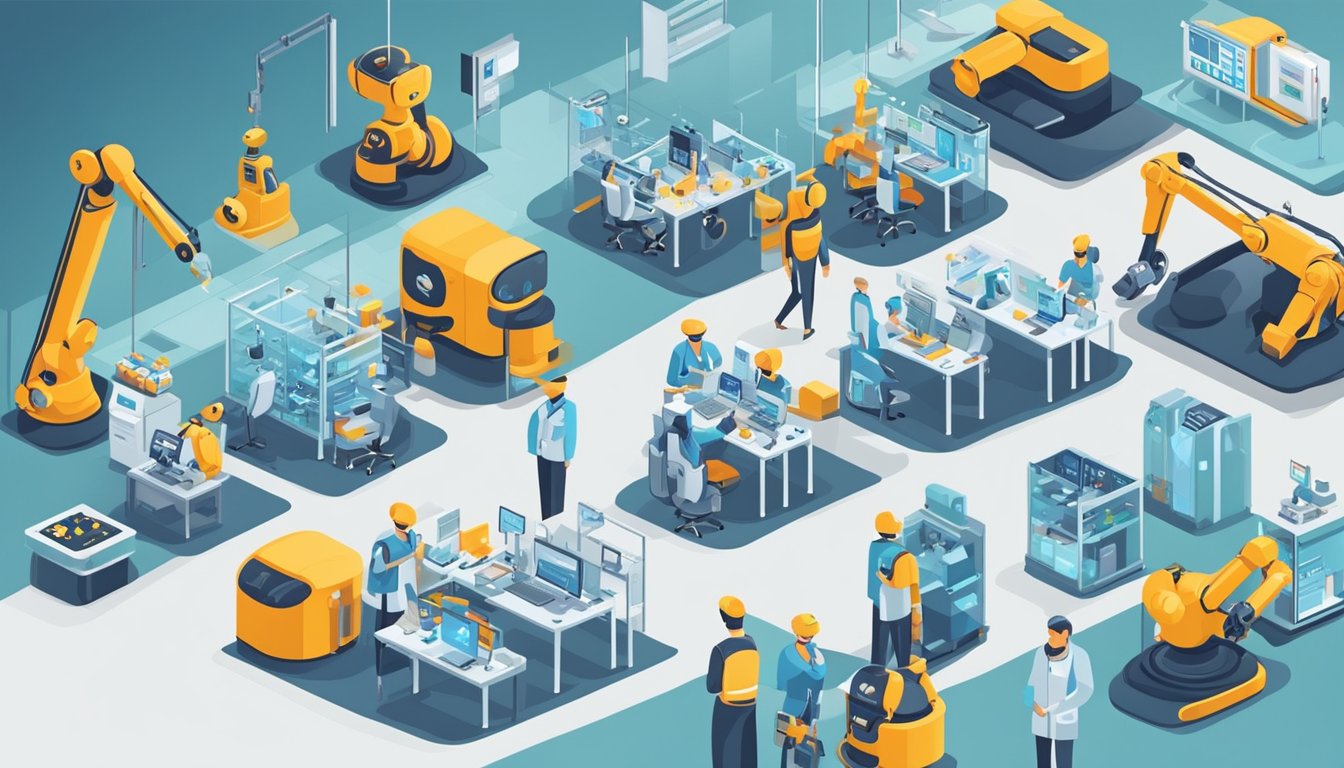
Have you ever wondered how AI is revamping the industries around you? Let’s take a peek at how AI automation is not just a buzzword but a game changer in the realms of healthcare, financial services, and manufacturing.
Healthcare and AI Automation
Ever imagine a world where your health can be managed by intelligent machines? Well, you’re living in it! AI in healthcare isn’t just about robots performing surgery; it’s about data analysis that predicts patient outcomes, personalizes treatment plans, and even streamlines administrative tasks to give doctors more time with patients. Companies are deeply involved in this transformation, with 44% showing an interest in AI applications. Picture AI systems analyzing big data to spot trends that elude human researchers. It’s happening now!
Financial Services Transformation
Now, let’s talk about money matters. In financial services, AI is the new ace, transforming everything from risk assessment to customer service. Gone are the days of solely relying on traditional banking; now, AI helps sniff out fraud with advanced machine learning algorithms and automates mundane tasks, making the industry both safer and more efficient. It might not be readily visible, but it’s there, working behind the scenes to ensure your financial stability is bolstered by cutting-edge technology.
Manufacturing and Robotics
And then there’s manufacturing—where AI meets muscle. Robotics, powered by AI, are doing more than just the heavy lifting; they’re bringing precision and efficiency to the table. With increased data accessibility, businesses are implementing machine learning to transform operations. We’re not just talking about a few percentage points in efficiency gains, but a significant overhaul that positions AI as a transformative force in the industry. This synergy of manufacturing and robotics is reshaping production floors across the globe.
Challenges and Risks

When wading into the waters of AI automation, you’re bound to encounter some slippery fish. From security slip-ups to bias blunders, let’s ensure your AI journey doesn’t hit an iceberg.
Addressing Security Concerns
Ever think about AI getting in the wrong hands? Security is no joke when it comes to AI. Imagine a scenario where your AI system is as secure as a screen door on a submarine. To prevent this, you need ironclad protocols that are essentially digital life jackets for your data. Managing the risks doesn’t just mean locking the door; it means monitoring who’s got a key!
Overcoming Bias and Failures
Here’s a tricky one: AI bias. Your AI is only as fair as the data it’s fed. So if it’s chowing down on biased data, guess what? You’ve got an AI spitting out decisions that might as well believe that the world is flat. And when AI fails, it’s not just a “whoops” moment—it can be a disaster! Ensuring fair and balanced AI is crucial, as is having a solid plan to nip those failures in the bud.
Safeguarding Jobs and Expertise
Bet you’ve heard the robot uprising tales, right? While we’re not quite there, AI automation does shake up the job market. Fear not! Your role isn’t to become the Terminator of jobs but rather a guardian. Safeguarding jobs means getting your team up to speed with AI, ensuring they’re more Iron Man than tin man. Balance automation with human expertise and compliance to keep that human touch in a digital world.
Technological Considerations
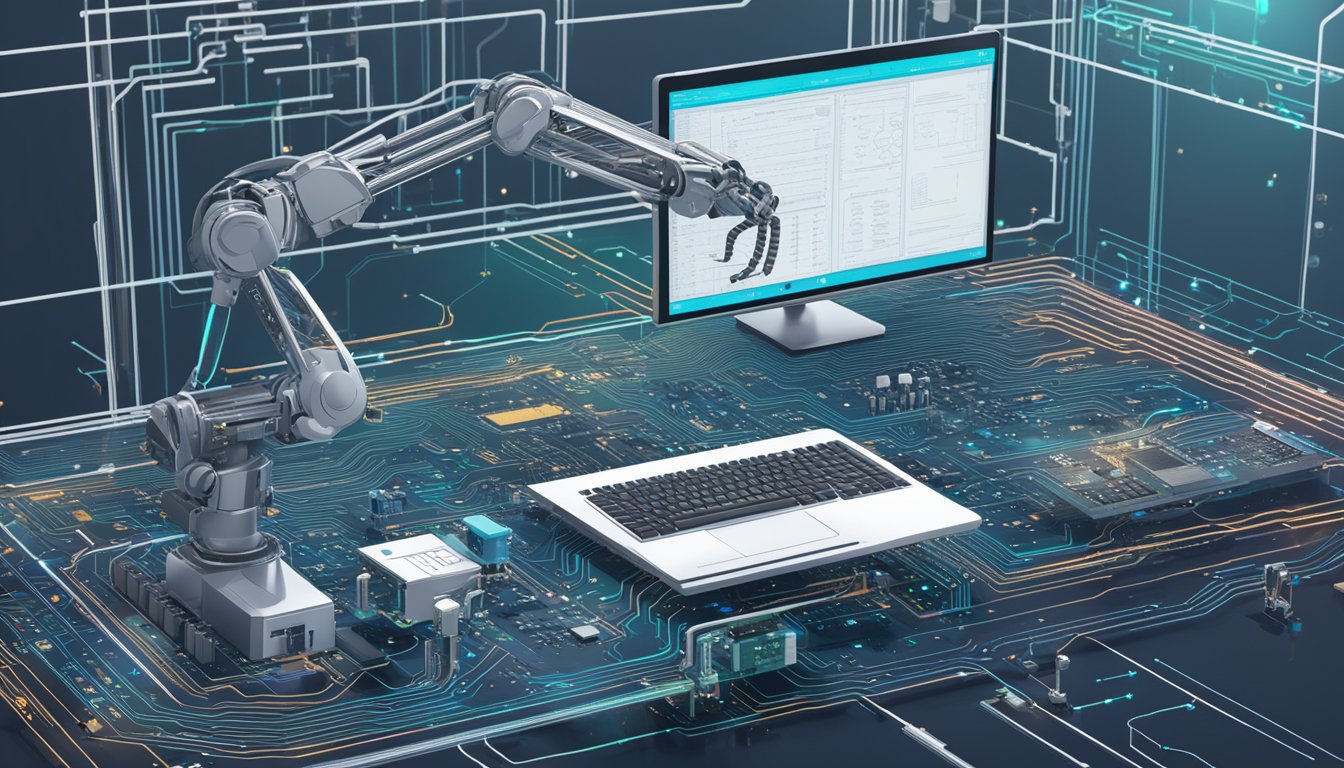
When you’re looking to enhance your business with AI automation, pinpointing the right technological solutions and understanding their nuances becomes critical. Let’s peel the layers off this tech onion and see what considerations you need to keep top of mind.
Selecting the Right Tools
Choosing the proper automation technologies can feel like trying to find a needle in a digital haystack. But fear not! You need to ensure that the tools you select are not only compatible with your existing systems but also scalable for future growth. Are you picking software robots that can work around the clock without getting tired? That’s a must for processes that demand endurance.
Data Processing and NLP
Next up, we talk about making sense of the data deluge. Your AI should eat through data like a hungry caterpillar, thanks to robust data processing capabilities. Have you thought about integrating Natural Language Processing (NLP)? Because let me tell you, teaching your AI to understand human language isn’t just cool, it’s currency in today’s market.
Evaluating AI and Automation Software
Last but not least, taking a magnifying glass to those shiny AI and automation tools before committing is crucial. How about their security features? Are they up to par? And hey, are they giving you the flexibility you need without playing hard to get? Remember, a smooth user experience is key for any tech to not just survive, but thrive in the wild tech savannah.
Integrating AI Automation
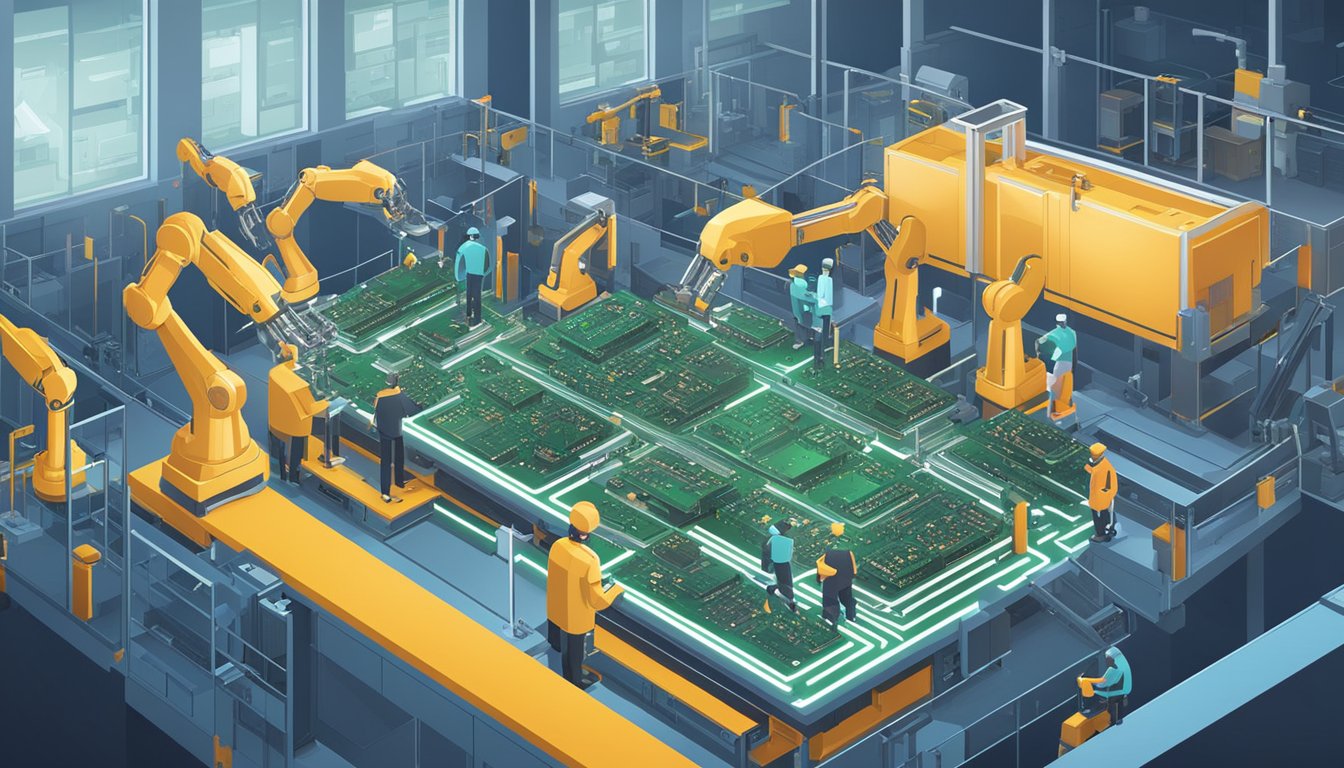
Embracing AI automation is a game-changer for businesses. It enhances efficiency and allows scaling, ensuring that human talent is utilized for more strategic tasks. Let’s dig into how this integration can truly revolutionize your workflow!
Streamlining Workflows
With AI automation, workflows become smarter and less cluttered. Imagine a digital workspace where repetitive tasks are automated, freeing you up to focus on the creative aspects of your job. Systems can now prioritize tasks, forecast needs, and quickly adapt to new data. Think about it: no more mundane data entry, and that’s just the start!
- Automated Prioritization: Tasks are sorted by urgency or importance without your input, reducing bottlenecks.
- Dynamic Adaptation: Systems learn from ongoing processes and evolve to meet changing demands.
Human-AI Collaboration
AI doesn’t replace humans; it makes us superheroes at our jobs! The ideal scenario is where AI takes over the monotonous tasks, and you tackle the ones requiring a human touch, like decision-making and critical thinking. This is where human supervision plays a crucial role, ensuring that technology is aligned with our goals.
- Decision Support Systems: AI provides data-driven insights, helping you to make informed choices.
- Creative and Ethical Oversight: You stay in the driver’s seat for creative direction and ethical considerations.
Scaling Intelligent Automation
When it comes to scaling, AI automation is like having a superpower. As your business grows, so does the AI’s capability to handle an increased load. This scalability means you can expand without the daunting costs of extensive training or hiring.
- Increased Capacity: Accommodate more work without additional stress on your existing workforce.
- Cost-Effective Expansion: Through automation, scale your operations without breaking the bank.
AI automation isn’t just a futuristic concept—it’s your new partner in shaping a more efficient, creative, and scalable workplace. By integrating intelligent automation, you’re not just surviving the digital revolution; you’re leading it. So are you ready to team up with AI and elevate your game?
Impact on the Workforce
Ever wondered how the rise of AI and automation could affect your day-to-day work? Let’s break it down into how it’s reshaping roles, the skills you’ll need to thrive, and why keeping things human-centric is crucial.
Transforming Employee Roles
Have you noticed changes in the workplace landscape? Well, with AI stepping in, job roles are evolving. According to McKinsey & Company, productivity growth could surge, with a significant chunk due to digital advancements. You can expect some roles to redirect towards more strategic, creative tasks, while others might vanish. Here’s the kicker: the future’s about complementing AI, not competing with it.
- Creative decision-making roles
- Strategic planning
- Innovation-driven tasks
New Skills for the AI Era
So, what’s in your AI-era toolkit? It’s a medley of tech-savvy abilities and perennial soft skills. AI will take over the mundane, which means your ability to adapt, learn, and exercise emotional intelligence is golden. Think about this: IBM’s findings tell us employees crave engaging, meaningful work more than ever. To stay ahead:
- Tech skills like coding, data analysis
- Soft skills like critical thinking, collaboration
Developing Human-Centric AI
Putting the “human” in human-centric AI is more than a warm, fuzzy concept. It’s about designing AI with empathy, ethical considerations, and an understanding of diverse needs. If you’re in HR, this is your time to shine! Develop AI that augments the human experience, ensuring technology is an ally in the workplace, not a replacement.
- Focus on diversity, equity, inclusivity
- Ethical AI implementation practices
Remember, you’re not just an employee; you’re a vital part of this exciting transformation. Stay curious, embrace the learning curve, and you’ll navigate the AI revolution like a pro!
Future of AI Automation
As you navigate the rapidly changing landscape of technology, it’s fascinating to see how AI Automation is not just a glimpse into the future—it’s actively shaping it. From crafting novel content with generative AI to self-driving cars that promise to transform our streets, it’s an exhilarating time to be alive. Strap in, because we’re about to take a whirlwind tour of some groundbreaking advancements.
Evolving with Generative AI
Have you ever marveled at the ability of AI to dream up new ideas? Generative AI is the creative mastermind driving innovation. It goes beyond simple automation; it’s about machines that learn from data to create something new—be it a poem, a piece of music, or even software code. Think of it as having a tireless collaborator that’s always brimming with fresh concepts, powered by advanced deep learning techniques.
Autonomous Vehicles Revolution
Imagine commuting while you sit back and enjoy a cup of coffee, reading a book or catching up on emails. This is not a lazy Sunday dream—it’s the imminent reality brought to you by the autonomous vehicles revolution. These self-driving marvels use a combination of sensors, AI algorithms, and data analysis to navigate the complexities of road travel, promising safer and more efficient journeys.
Continuous Learning and Adaptation
In a world that never stands still, AI systems must continually learn and adapt to new situations. Continuous learning and adaptation are the secret ingredients making AI more resilient and capable over time. By deploying deep learning techniques, AI systems evolve with each interaction, enhancing their decision-making and keeping your business at the cutting edge. Isn’t that something to look forward to?
Frequently Asked Questions
Embarking on the AI automation journey can be thrilling, but it’s natural to have questions before you dive in. Let’s unravel some of the top concerns and pave the way for a successful AI integration within your company.
What are the essential steps to kick off an AI automation project in my company?
To get the ball rolling on AI automation, you’ll want to pinpoint the problems you aim to solve and identify key opportunities where AI can add value. Then, assemble a team with the right expertise, assign a project leader, and meticulously plan your roadmap.
Could you share some successful case studies of AI automation implementations?
Certainly! There are numerous instances where businesses have harnessed AI automation to elevate efficiency and optimize processes. Look for case studies in your industry for a more relevant inspiration.
What are the most effective AI tools for automating workflows in 2024?
The top AI tools for automating workflows are those that seamlessly integrate with your current systems, offer scalable solutions, and deliver measurable improvements in productivity. Tools that provide features like predictive analytics, natural language processing, and advanced data analytics are at the forefront in 2024.
How do I measure the impact of AI automation after implementing it?
Post-implementation, measure the impact of AI automation through various metrics such as performance improvement, error reduction, customer satisfaction, and financial gains. It’s crucial to track both short-term wins and long-term changes to fully understand the benefits.
Can you suggest best practices for integrating AI automation within existing business processes?
Integrating AI automation effectively involves looking at your existing workflows with a critical eye, setting clear goals, and seeking tools that offer customization and flexibility. Training your team to work alongside AI will ensure smoother transitions.
What potential challenges should I be aware of when introducing AI automation to my team?
One should be prepared for challenges such as resistance to change, data security concerns, and the initial learning curve. It’s essential to establish open communication, provide ample training, and address any apprehension within the team proactively.

